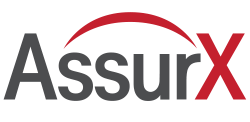February 27, 2025
Quality risk management (QRM) has become a crucial tool for ensuring regulatory compliance worldwide. It plays a central role in ISO standards and regulations, including the EU Medical Device Regulation (MDR/IVDR), FDA 21 CFR 820, and ICH Q10 in the pharmaceutical and biotech industries.
However, many organizations fail to fully close the loop on risk management, leaving risks unmitigated and opening the door to customer complaints and rising costs. This article outlines four essential steps to establish a robust, closed-loop quality risk management process within an enterprise quality management system (EQMS).
Step 1: Identifying Quality Risks
The first step in quality risk management is identifying risks or potential safety hazards. Capturing risk data in a centralized system is essential for prioritization and effective mitigation rather than addressing risks on an ad-hoc basis.
Key risk factors to monitor include:
- Safety incidents, including near-misses
- Internal audit findings
- Changes in products or processes
- New product introductions
An EQMS provides a centralized risk register, allowing organizations to consolidate and prioritize quality risks systematically.
Step 2: Conducting a Quality Risk Assessment
Once a risk is identified, the next step is to assess its severity and likelihood. A common tool for this is the risk matrix, which categorizes risks based on their probability and impact.
Each risk is assigned a likelihood and impact score (on a scale of 1 to 5). The overall risk score is then calculated by multiplying these values.
For instance:
- A minor issue (e.g., a papercut) may score high on likelihood but low on impact, placing it in the acceptable risk range.
- A high-impact event (e.g., a machine-related injury) may have a lower probability but a severe consequence, making it an unacceptable risk requiring immediate attention.
Organizations should establish internal criteria to define acceptable and unacceptable risks based on historical data and expert evaluation.
Step 3: Implementing Risk Controls
After assessing risks, the next step is implementing controls to mitigate high-risk issues. Risks categorized as unacceptable should be addressed immediately, followed by medium-risk items.
Control measures should be validated and verified:
- Validation: Reassess the risk post-implementation to ensure mitigation efforts have reduced it to an acceptable level.
- Verification: Confirm that the control measures are properly executed, often requiring on-site inspections.
An EQMS facilitates this by linking risk items to their corresponding controls and creating action items for validation and verification, ensuring these critical tasks are completed.
Step 4: Monitoring and Adjusting
A common pitfall in quality risk management is stopping at risk control implementation without continuous monitoring. To ensure lasting risk mitigation, corrective actions should be reviewed over time.
Organizations should:
- Conduct periodic effectiveness checks (e.g., every six to eight months)
- Leverage EQMS analytics for trend analysis and reporting
- Establish follow-up actions, such as audits or additional plant-floor inspections
- Calculate residual risk after corrective actions and determine if further mitigation is necessary
If residual risk remains high, the process should restart at risk identification, ensuring continuous improvement.
Conclusion
A well-structured quality risk management process is essential for minimizing compliance risks, improving product safety, and enhancing operational efficiency. Organizations must go beyond initial risk identification and control implementation to ensure continuous validation, verification, monitoring, and adjustment.
By integrating QRM into corrective action processes, change control, and broader compliance strategies, companies can build a more resilient and reliable quality management system. An EQMS streamlines and standardizes this process, ultimately reducing risks and fostering a culture of continuous quality improvement.
Learn how the AssurX Risk Management Solution supports ISO 13485 compliance.
About the Author
Stephanie Ojeda is Director of Product Management for the Life Sciences industry at AssurX. Stephanie brings more than 15 years of leading quality assurance functions in a variety of industries, including pharmaceutical, biotech, medical device, food & beverage, and manufacturing.


